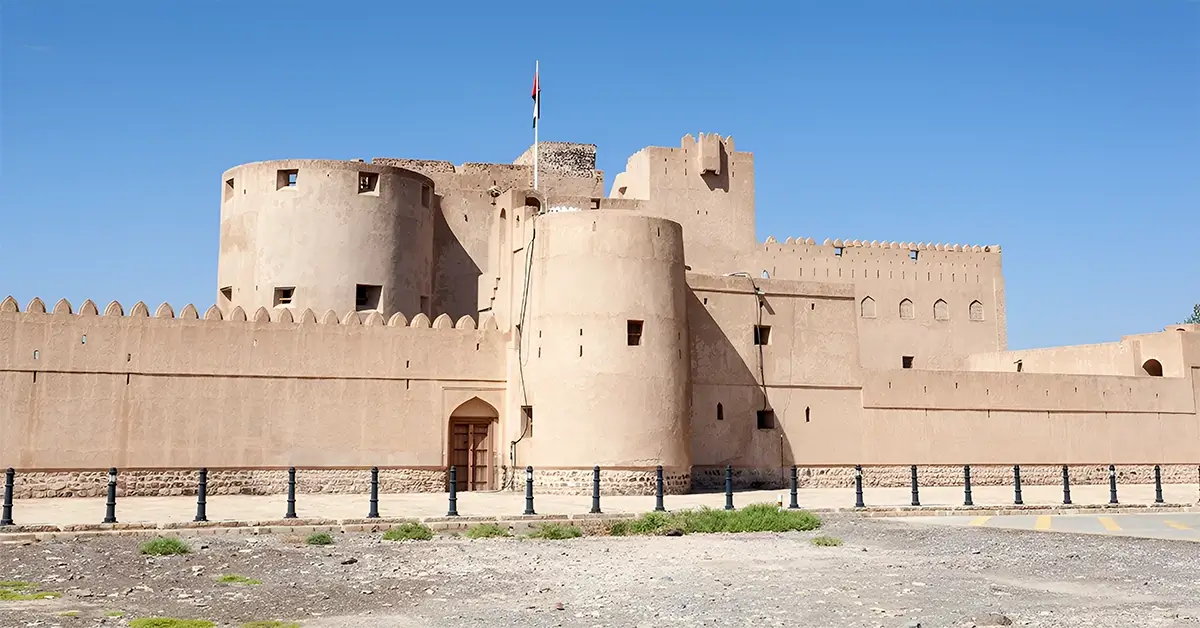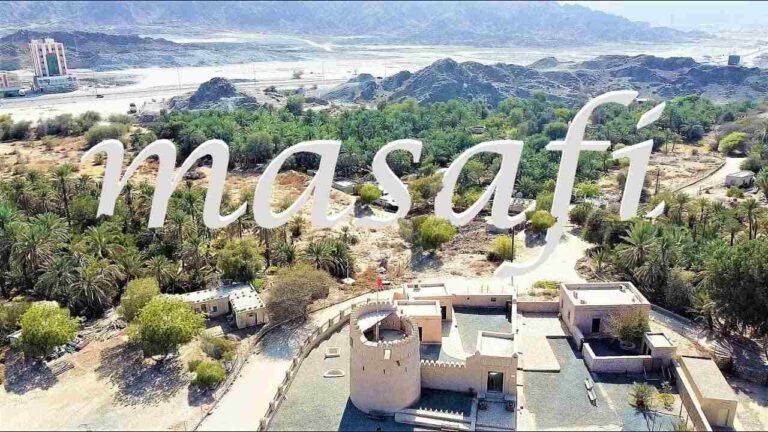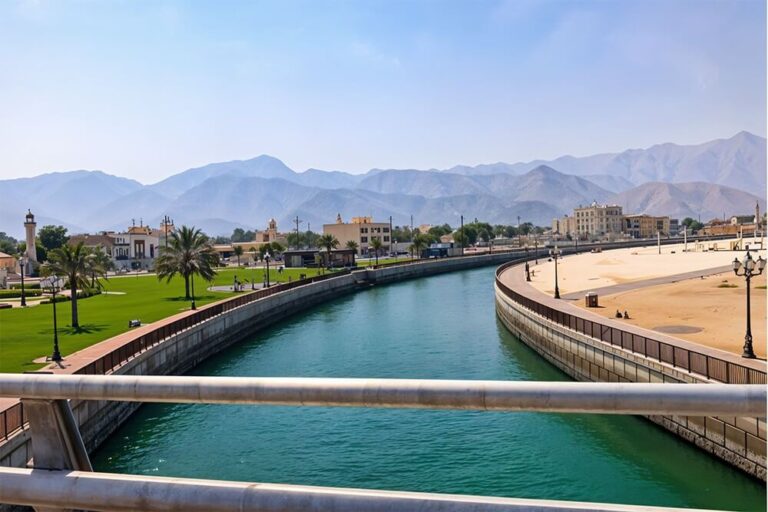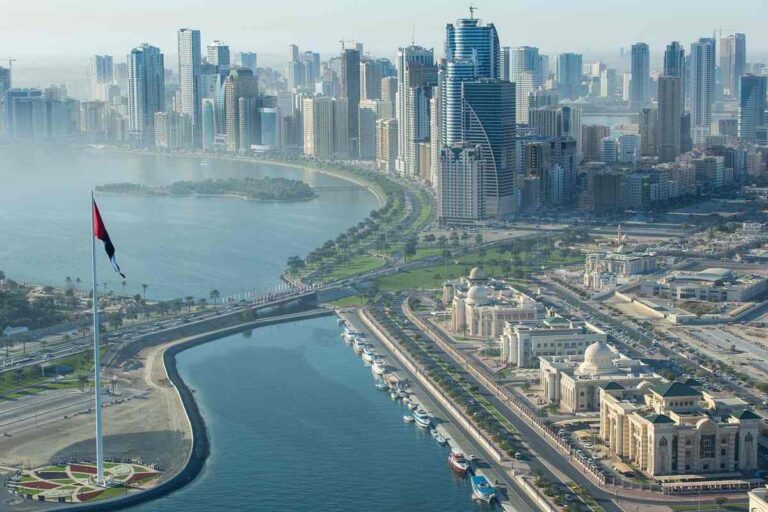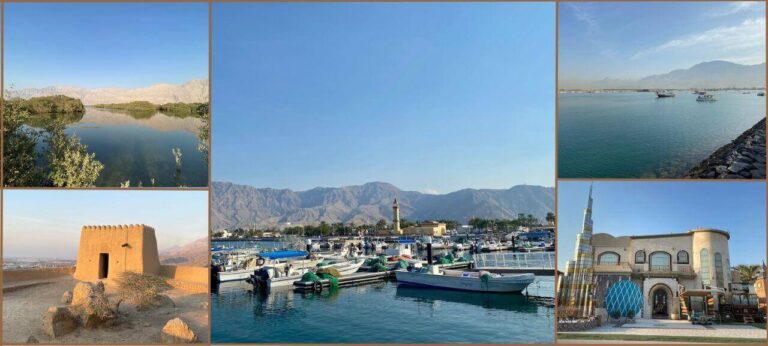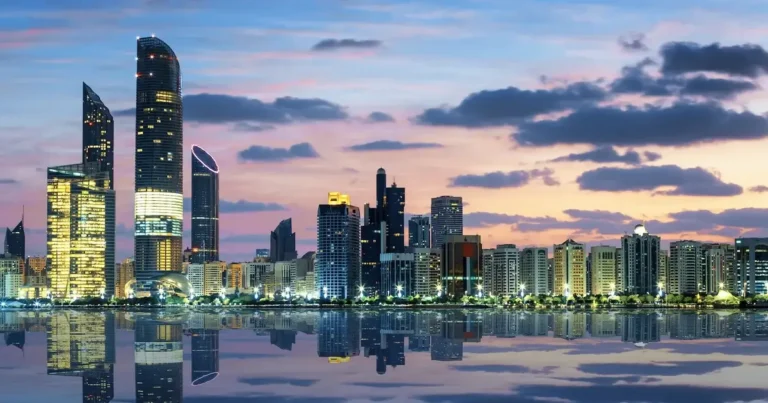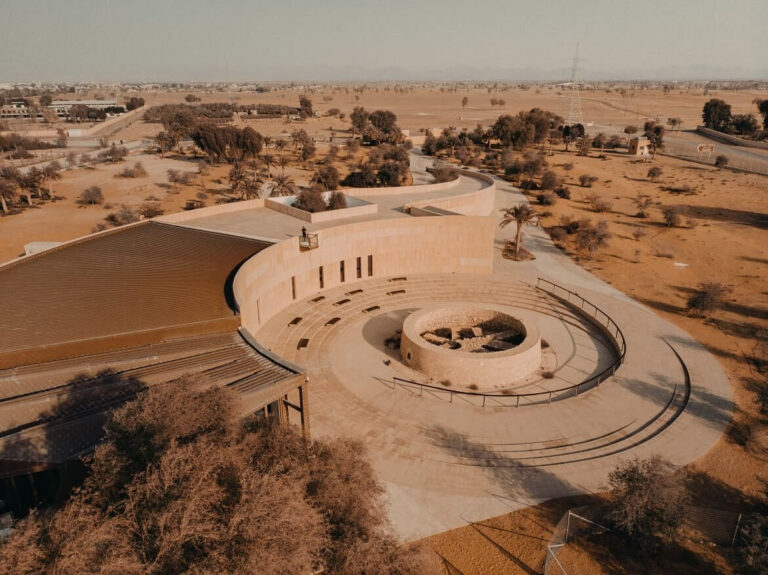Falaj Al Mualla, Ajman: A Heritage Oasis in the Heart of the UAE
Tucked between desert dunes and jagged hills lies Falaj Al Mualla, a serene inland town in the Emirate of Ajman that tells the story of Emirati resilience, tradition, and harmony with nature. While Ajman’s coastal areas have transformed with modernity, this town remains rooted in heritage—quietly flourishing through agriculture, cultural depth, and community pride.
Often overlooked on the map, Falaj Al Mualla is one of the UAE’s most authentic representations of rural identity and environmental sustainability.
A Verdant Outpost in Ajman’s Hinterland
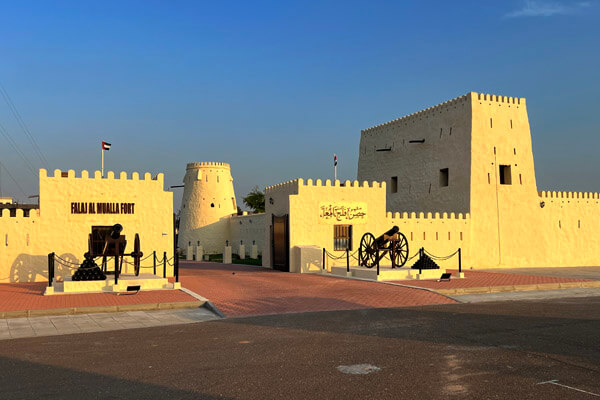
Falaj Al Mualla is distinguished by its oasis-like geography, fed by underground wells and framed by the majestic Hajjar foothills. Historically dependent on falaj (traditional irrigation channels), the town’s name is a tribute to these life-giving systems that transformed arid land into productive farmland.
During winter, the landscape becomes surprisingly green, with pockets of cultivation adding vibrant contrast to the beige terrain. Date palms sway alongside farms that produce citrus, grains, and fodder crops—a visual metaphor for life thriving in unlikely places.
Architectural Legacy & Cultural Identity
The built environment of Falaj Al Mualla is a tribute to traditional Emirati architecture. Wind towers, coral stone homes, and fortified structures reflect a lifestyle shaped by environmental adaptation and social cohesion. The town’s historic watchtowers and heritage houses are not just relics—they’re symbols of self-sufficiency and local governance in pre-union times.
The architectural vocabulary here isn’t just aesthetic; it’s functional. Every wall and arch tells a story of how desert life was lived with dignity, balance, and communal wisdom.
Recommended: Manama
Agriculture: The Soul of the Community
Agriculture remains the economic and emotional heart of Falaj Al Mualla. Thanks to its natural underground aquifers, the area supports farming even when surrounding regions fall dry. Many families still tend to their ancestral lands, practicing traditional farming methods alongside modern innovations.
Seasonal markets feature dates, honey, herbs, and handmade goods, connecting the town’s agricultural soul to Ajman’s urban appetite. These small-scale economies embody a broader theme: the UAE’s push for food security rooted in local knowledge and natural sustainability.
Faith, Festivities, and Family
Falaj Al Mualla embodies Emirati cultural values in their purest form. Life revolves around the mosque, the majlis, and the family home. Religious observances, weddings, and local festivals take place in open courtyards, often accompanied by poetry, traditional dances, and communal feasting.
During Eid and national holidays, the town comes alive with celebrations that blend centuries-old rituals with the spirit of modern unity. The younger generation is deeply connected to this identity, with schools and cultural centers fostering respect for both heritage and progress.
Gateway Between Ajman and the Interior
Strategically located inland, Falaj Al Mualla serves as a link between Ajman city and the mountainous interior. Its roads—once used by camel caravans—are now paved and connected to regional highways, making the area more accessible for eco-tourists, researchers, and curious travelers.
This accessibility hasn’t compromised its charm. Unlike cities that have surrendered to concrete, Falaj Al Mualla retains its rural aesthetic—making it an ideal escape for those seeking authenticity without isolation.
A Place Where Time Slows Down
In a nation known for its futuristic skylines, Falaj Al Mualla slows the pace. There are no high-rises here, no neon-lit malls. What you find instead are orchards, goats on hilltops, children playing in shaded lanes, and elders recounting stories beneath acacia trees.
It’s a place where you feel the weight of heritage, the comfort of silence, and the promise of a slower, more grounded way of living.
FAQ: Falaj Al Mualla Ajman
What is Falaj Al Mualla known for?
Falaj Al Mualla is known for its traditional irrigation system (falaj), agriculture, heritage homes, and deep-rooted Emirati culture.
Is Falaj Al Mualla worth visiting?
Absolutely. It offers a peaceful rural retreat rich in tradition, perfect for cultural tourism, photography, and heritage exploration.
How far is Falaj Al Mualla from Ajman city?
It is located around 50–60 km inland from Ajman city and is easily accessible via well-maintained roads.
What type of agriculture is practiced there?
Date farming, citrus orchards, fodder crops, and seasonal vegetables are commonly grown using traditional and sustainable practices.
Can tourists stay in Falaj Al Mualla?
While not a resort destination, nearby areas offer homestays and rural retreats for those looking to experience traditional UAE hospitality.
Falaj Al Mualla isn’t just a town—it’s a legacy, a lifeline, and a lesson in how culture and nature can thrive side by side. As Ajman continues to expand its identity, places like this ensure its soul remains intact—offering residents and visitors a timeless perspective on what truly matters.
Stay tuned to UAEbreaking.com for more in-depth guides to the UAE’s hidden heritage and local experiences.
- Al Bidiyah, Fujairah: A Spiritual Landmark Anchored in Time - July 24, 2025
- Qidfa’, Fujairah: The Oasis Town Rooted in Water and Wisdom - July 24, 2025
- Mirbah, Fujairah: The Coastal Hamlet Where Mountains Meet the Sea - July 24, 2025

